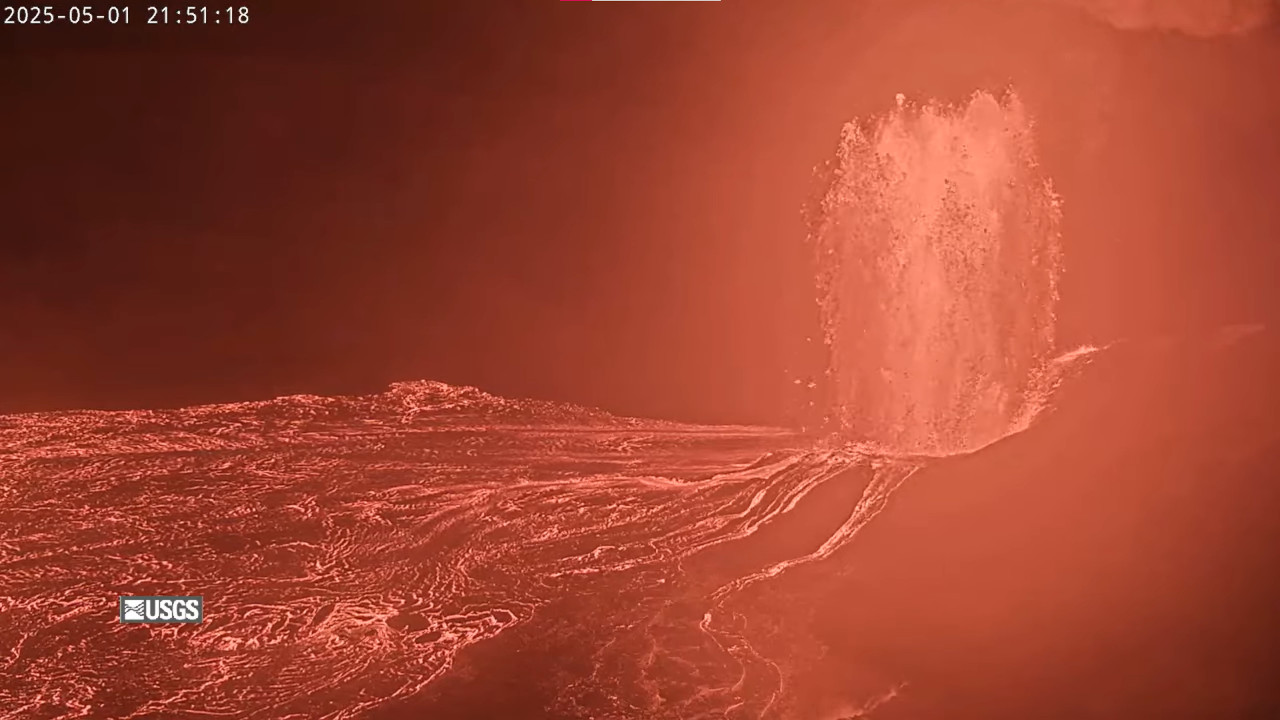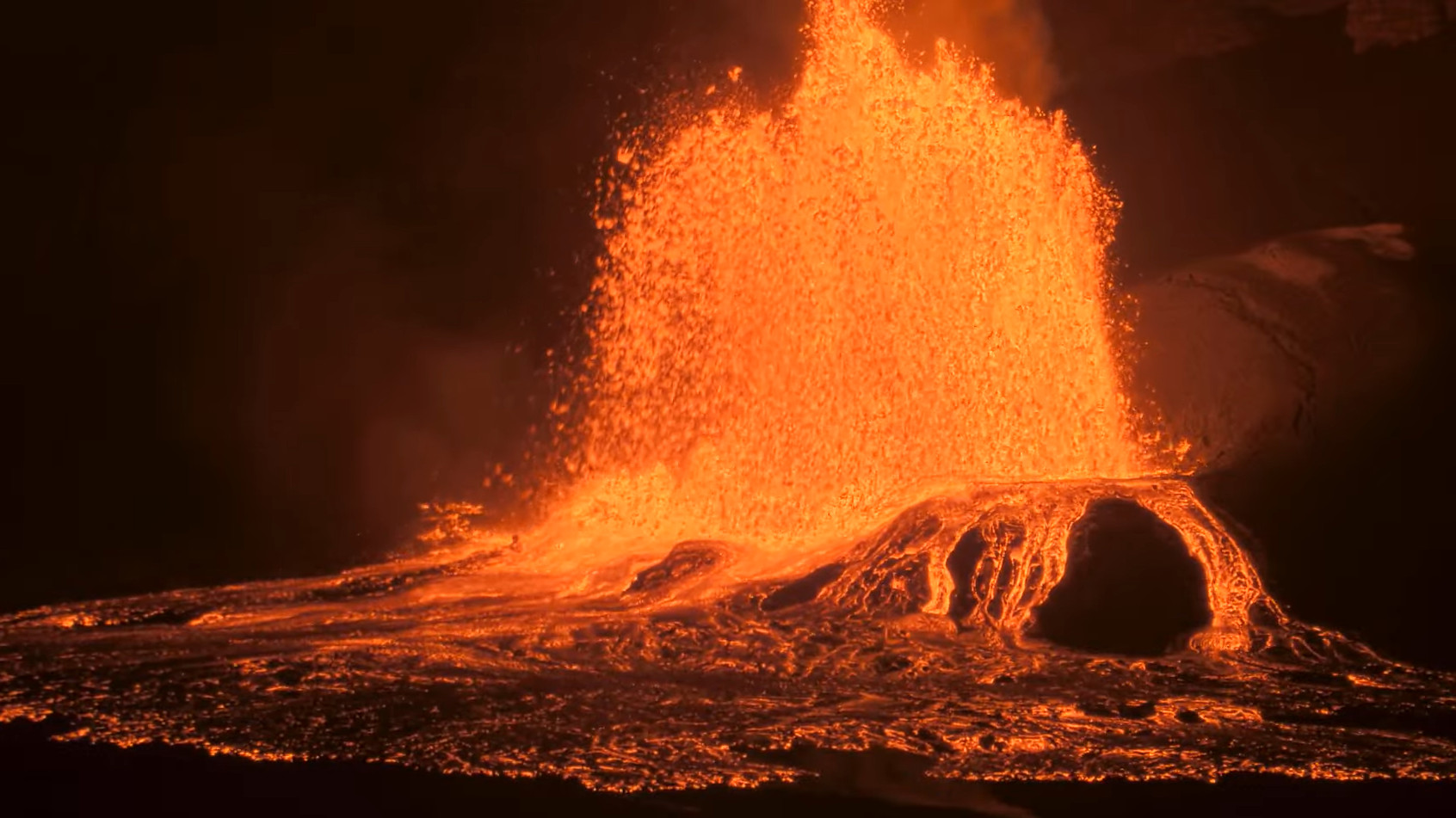(BIVN) – Episode 19 in the ongoing Kīlauea summit eruption came and went overnight at Hawaiʻi Volcanoes National Park.
Although precursory activity was observed at the summit vents for much of Thursday (26 cycles of low dome fountaining), the main fountaining began at about 9:28 p.m. HST on May 1st.
Fountaining ended at 5:20 a.m. HST Friday morning (May 2) after erupting from the north vent for just under 8 hours.

USGS webcam view of the lava fountain produced during Episode 19 in the ongoing eruption at the summit of Kīlauea
From a status report written by the USGS Hawaiian Volcano Observatory on Friday morning:
Episode 19 was preceded by over 9 hours of cycles of low dome fountaining and short overflows from the north vent followed immediately by lava draining back into the vent, which started at 11:49 a.m. HST on May 1. Sustained fountaining from the north vent only, began at 9:28 p.m. HST on May 1 and lasted for 7 hours and 52 minutes with maximum estimated heights at about 330 feet (100 meters). The eruption produced just under 4 million cubic yards (3 million cubic meters) of lava and the flows covered about half of the Halema’uma’u crater floor.
About 7 microradians of deflationary tilt were recorded at UWD during the main fountaining of episode 19, and the tiltmeter began recording inflation as soon as the lava was draining in the vent at 5:20 a.m. HST this morning. Seismic tremor began decreasing as the tilt switched and lava fountaining stopped, with weak tremor still being recorded as typical during eruptive pauses.

USGS webcam view of the lava fountain produced during Episode 19 in the ongoing eruption at the summit of Kīlauea
No changes have been detected in the East Rift Zone or Southwest Rift Zone, scientists say.
The USGS Volcano Alert Level for Kīlauea remains at WATCH.


by Big Island Video News7:10 am
on at
STORY SUMMARY
HAWAIʻI VOLCANOES NATIONAL PARK - The episode began on the evening of May 1st and ended this morning after just under 8 hours of lava fountaining.